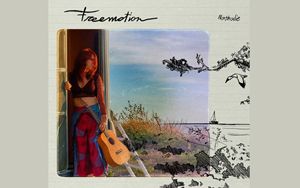(Finance) – New perspectives and new markets open up with photovoltaic also in music. To prove it is Nathalie – winner of X Factor 4 who, three years ago now, decided to transform his camper into music study traveling powered by photovoltaic and, on January 10, 2024, he released the first Italian album made with photovoltaic panels with outdoor recording sessions powered by the sun.
The album is called Freemotion and its genesis was not a simple experience, but a revelatory one for new possible developments and uses of sustainable energies also in the artistic field.
But how does recording an album work outside of a classic recording studio? “It’s much more difficult”, the winning singer of X Factor 4 tells us: extended times, long waits and interference of all kinds. But in exchange a lot of freedom and awareness of working in harmony with nature.
The recordings in campers and outdoors they occurred only during the day, starting early enough in the morning to take advantage of the hours of light: in the sessions with sound engineers and musicians one became physically attached to the camper service battery, recharged with photovoltaics. Tools used, a sound card and converter, 2-3 switching power supplies drawing 12v-5a each (2 or 3 depending on the day), mic preamp emulators and guitar and bass amp simulators, to avoid the real ones which would have absorbed much more.
“Then we stopped when the service battery dropped to around 12.4-12.5 volts and we waited for it to recharge with the sun, often during the lunch break. Then we would resume in the afternoon as long as there was sunlight. When the sun went away we closed the recording session for that day,” explained Nathalie.
“Instead solo the load was lower because I used mine laptop computer, my Apogee Duet sound card, alternating midi instruments with the use of connected microphones or instruments wired to the sound card (e.g. my acoustic guitar). I have almost always recorded during the day (at night every now and then but only with the midi keyboard or the midi Dubler microphone connected via USB and which therefore consume very little power, no more than a mouse connected to the PC), I have done it for example. for the songs “Limbo” and “The Power to Feel”, recorded between Farfa and the Abruzzo mountains. At night I could do session of maximum 2 hours and then I had to stop. The morning after a night session I always had to wait a bit for the sun to recharge the battery to start recording again”
Working according to the rhythms dictated by nature, a true unicum in this historical period dominated by technology that was created precisely to force them: “It is undoubtedly a difficult test – admits Nathalie – but also exciting. The sound engineers and musicians who collaborated on the project were a little disoriented at first but also curious and in the end very happy. For me it was an incredible testespecially to prove to myself that it is possible to record using solar energy”
Ato good practice that speaks to the entire music market for raise awareness of producers and artists with a concrete and successful project.
